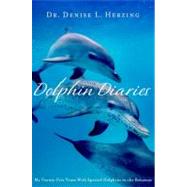
| Acknowledgments | p. xi |
| Foreword | p. xiii |
| Introduction | p. xvii |
| The Early Years: Exposure-1985-91: First Contact with Dolphins: A Vision of the Future | p. 1 |
| First Contact with Dolphins: Establishing the Relationship | |
| Pre-1985ùB eginnings | p. 3 |
| 1985ùFirst Contact | p. 13 |
| 1986ùMarks, Sharks, and Barks | p. 25 |
| Getting the Drift: Dolphin Behavior and Communication | |
| 1987ùDeciphering Dolphin Communication | p. 39 |
| 1988ùSwim-Aways | p. 49 |
| Realities of Life at Sea | |
| 1989ùThe Wild Dolphin Project Is Born | p. 62 |
| 1990ùFilms and Fins | p. 72 |
| 1991ùRosemole Gives Birth | p. 82 |
| The Middle Years: Observationù1992-96: Cracking the Code: Detection and Deciphering | p. 95 |
| Dolphin Society Takes Shape | |
| 1992ùGangs, Girls, and Games | p. 97 |
| 1993ùGrowing up Dolphin | p. 111 |
| Interspecies Interactions: Spotted and Bottlenose Dolphins | |
| 1994ùStubby's Revenge | p. 124 |
| Coming Up for Air | |
| 1995ùOther Species on the Sandbank | p. 148 |
| 1996ùCrossing Boundaries | p. 154 |
| The Later Years: Insightù1997-2008: Two-Way Communication in the Wild: Is It Possible? | p. 173 |
| The Two-Way Work Begins: Phase II | |
| 1997ùHuman-Dolphin Communication | p. 175 |
| 1998ùCaroh, the ScarfThief | p. 194 |
| 1999ùKeyboards and Communication | p. 221 |
| Advancing the Work | |
| 2000ùLosing Lanai | p. 225 |
| 2001ùA Sound Society | p. 232 |
| 2002-03ùWinter Work in the Bahamas | p. 248 |
| 2004ùTwo Decades Later | p. 257 |
| Three Generations: Grandmothers and Grandfathers | |
| 2004-06ùHurricane Hell: Frances, Jeanne, and Wilma | p. 260 |
| 2007-08ùLiving on the Edge | p. 267 |
| The Future: In Their World, on Their Terms | p. 287 |
| Appendix: Family Trees | p. 293 |
| Selected References | p. 299 |
| Index | p. 305 |
| Table of Contents provided by Ingram. All Rights Reserved. |
The New copy of this book will include any supplemental materials advertised. Please check the title of the book to determine if it should include any access cards, study guides, lab manuals, CDs, etc.
The Used, Rental and eBook copies of this book are not guaranteed to include any supplemental materials. Typically, only the book itself is included. This is true even if the title states it includes any access cards, study guides, lab manuals, CDs, etc.